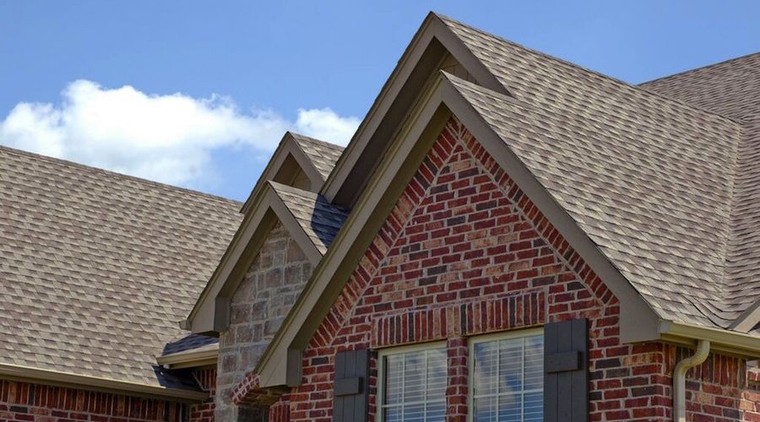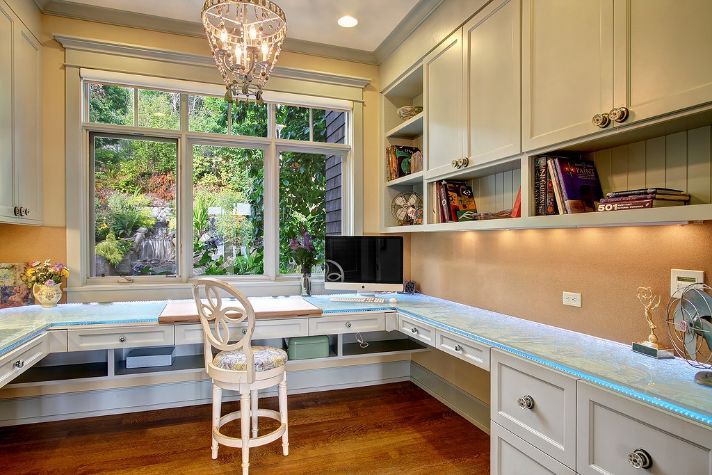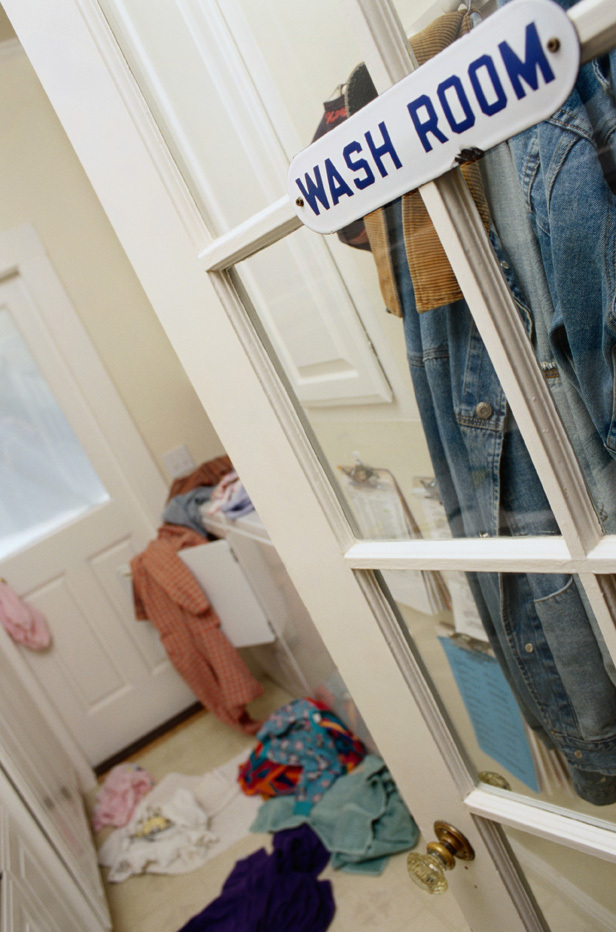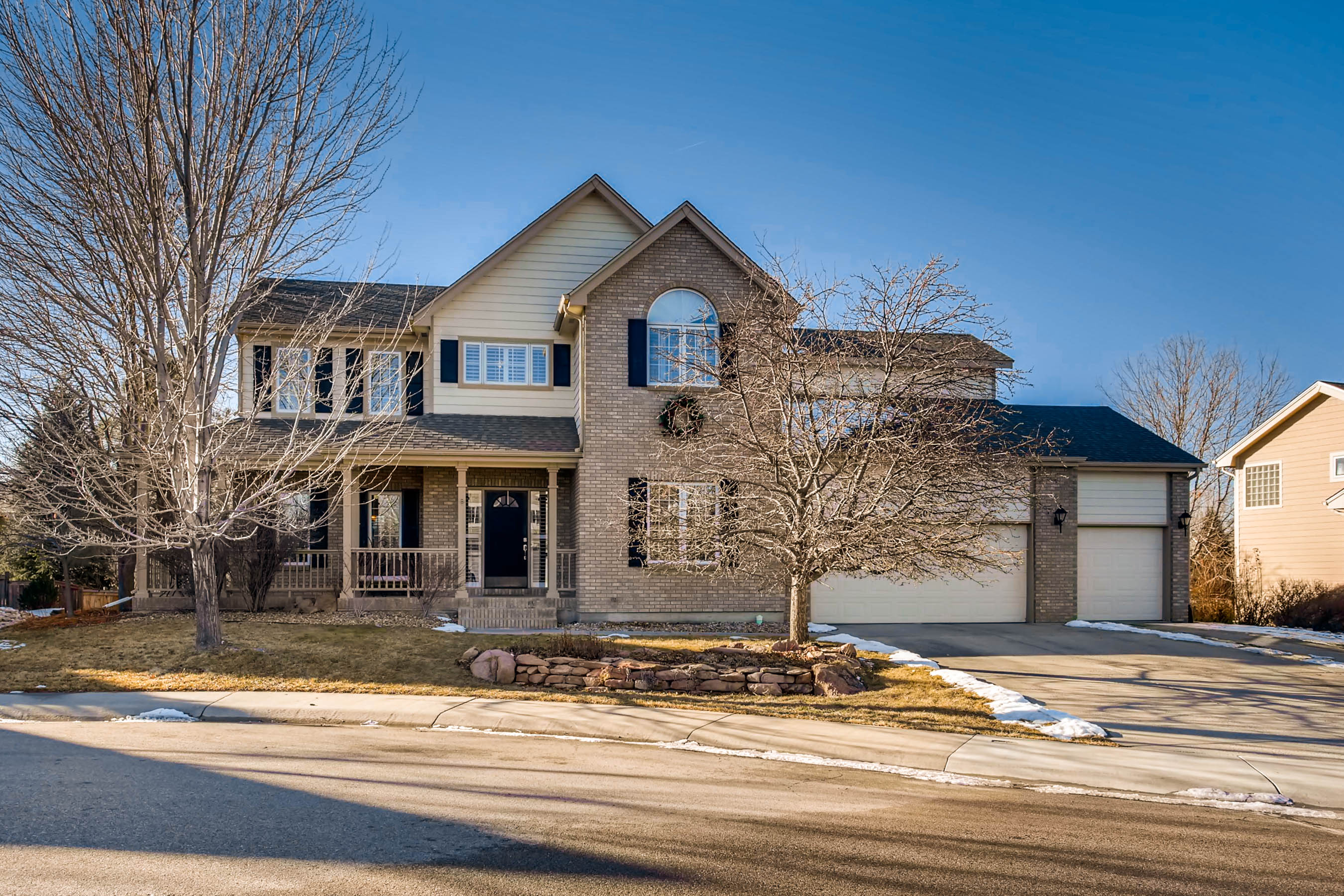6 Powerful Reasons to Consider a Short Sale Instead of Foreclosure


If you are unable to make your mortgage payments, you may be considering what to do next. One option is a short sale. Another option is foreclosure. There are many benefits to choosing a short sale over foreclosure.
Before you make a decision, make sure you know the facts. Our partner, Lambros Politis, Lead Counsel and debt settlement specialist at Ark Law Group, points out six powerful reasons to consider a short sale instead of foreclosure:
Selling your home can be a tough choice. It’s an emotion-packed decision that affects your whole family. Often homeowners feel that selling short is a catastrophe – even when it’s almost impossible to make their mortgage payments.
A short sale can be the first step to a financial freedom. The relief from getting out from under an unaffordable mortgage can be exhilarating. It really is the beginning of a new life.
Foreclosure is a far worse alternative to a short sale. If you keep hoping something will change – you’ll get a windfall or a huge raise – and it doesn’t happen, at some point you’ll have to stop paying your mortgage. When you go into default, your bank will foreclose. And that’s very bad news.
If your mortgage payments are too much for you to handle and you’re at risk of losing your home, I want you to consider these reasons for choosing a short sale.
1.In a short sale, all debts will be settled or re-negotiated.
With a foreclosure, your home will almost certainly sell for less than what you owe. Your mortgage lender then might have the right to sue you for the rest of the debt or garnish your wages to get the money you still owe. The nightmare isn’t always over just because you lost your property.
Washington State allows non-judicial foreclosure on a lien. If your lender chooses non-judicial foreclosure, they can’t collect any remaining balance from you after they auction off your home. However, if you have other liens against your property – a second mortgage, a HELOC, or other debts secured by your home – those lenders still have the right to sue you, garnish your income or take money out of your bank account.
With a short sale, we will work with your mortgage holder to get a deficiency waiver, so the balance of your debt is forgiven. We will also work with any other lender to remove their lien from the property. This has to happen or the short sale can’t proceed. Our negotiator will also try to get a better deal for you, if the lender won’t forgive the debt – such as a reduced payment plan.
As a rule, we’re able to get full settlements for 90% to 95% of our clients while negotiating a short sale.
2.Foreclosure has a bigger impact on your credit than a short sale.
If you stop making payments on your home, that’s a big deal to lenders. That’s why a foreclosure is noted in your credit report for seven years. Even if you recover financially, have a down payment saved and great income, you’re very unlikely to be able to buy a new home for at least a few years.
A short sale is also kept in your credit record for seven years – and will also lower your credit score. Following a short sale, the waiting period before you can qualify for a Fannie Mae or Freddie Mac loan is much shorter than if you go through foreclosure. And without delinquent payments, your credit score will be higher. If you’re hoping to get an FHA loan, you may qualify for consideration even sooner.
3.Foreclosure is public information.
There is some stigma to foreclosure. If the bank plans to auction off your home, they’ll put notices on your door and in your yard. Your neighbors will know you aren’t able to make your mortgage payments.
From the outside, a short sale looks like any other real estate transaction. No one needs to know. You’re in good company. As recently as March 2015, 10% of all home sales were short sales.
4.With a short sale, you may qualify for generous government cash incentives to help with relocation.
If you meet HAFA (Home Affordable Foreclosure Alternatives) requirements you may get up to $10,000 when your short sale closes. While it’s called “relocation assistance,” you can use the money for anything. To qualify, you need to be using this home as your primary residence.
Even if you don’t qualify for HAFA relocation assistance, you have other options. If you have a Fannie Mae loan, you may qualify for up to $3,000 in assistance at closing. FHA and VA lenders may offer $1,500.
Not all lenders participate in these programs. We find that our clients get this assistance in about 70% of the sales we help with.
5.You don’t have to go it alone.
When you work with a team of professionals, you know that you have smart people on your side, working to get you everything you’re eligible for. You don’t have to talk to your lender yourself – we’ll take care of it. Nothing falls through the cracks. You don’t have to be the expert. All your questions are answered.
In the end, it’s always better to know you did everything possible to get the best outcome.
6.After a short sale, you can start fresh.
This is what people tell me is the biggest benefit of a short sale. It comes back to what I said at the beginning. A foreclosure only gets rid of your mortgage payment. Other lenders will still need to be paid.
We work very hard to resolve ALL your debts when we negotiate your short sale. You can let go of that stress and move forward with the rest of your life.

Richard Eastern is a Windermere broker in Bellevue, WA and co-founder of Washington Property Solutions, a short sales negotiating company. Since 2003 he has helped more than 900 homeowners sell their homes. A Bellevue native and a University of Washington grad, Richard is an avid sports fan and a devoted Little League and basketball coach. You can learn more about Richard here or at www.washortsales.com.
New Features vs. Character


We are often asked, “Which is the better buy, a newer or older home?” Our answer: It all depends on your needs and personal preferences. We decided to put together a list of the six biggest differences between newer and older homes:
The neighborhood
Surprisingly, one of the biggest factors in choosing a new home isn’t the property itself, but rather the surrounding neighborhood. While new homes occasionally spring up in established communities, most are built in new developments. The settings are quite different, each with their own unique benefits.
Older neighborhoods often feature tree-lined streets; larger property lots; a wide array of architectural styles; easy walking access to mass transportation, restaurants and local shops; and more established relationships among neighbors.
New developments are better known for wider streets and quiet cul-de-sacs; controlled development; fewer aboveground utilities; more parks; and often newer public facilities (schools, libraries, pools, etc.). There are typically more children in newer communities, as well.
Consider your daily work commute, too. While not always true, older neighborhoods tend to be closer to major employment centers, mass transportation and multiple car routes (neighborhood arterials, highways and freeways).
Design and layout
If you like Victorian, Craftsman or Cape Cod style homes, it used to be that you would have to buy an older home from the appropriate era. But with new-home builders now offering modern takes on those classic designs, that’s no longer the case. There are even modern log homes available.
Have you given much thought to your floor plans? If you have your heart set on a family room, an entertainment kitchen, a home office and walk-in closets, you’ll likely want to buy a newer home—or plan to do some heavy remodeling of an older home. Unless they’ve already been remodeled, most older homes feature more basic layouts.
If you have a specific home-décor style in mind, you’ll want to take that into consideration, as well. Professional designers say it’s best if the style and era of your furnishings match the style and era of your house. But if you are willing to adapt, then the options are wide open.
Materials and craftsmanship
Homes built before material and labor costs spiked in the late 1950’s have a reputation for higher-grade lumber and old-world craftsmanship (hardwood floors, old-growth timber supports, ornate siding, artistic molding, etc.).
However, newer homes have the benefit of modern materials and more advanced building codes (copper or polyurethane plumbing, better insulation, double-pane windows, modern electrical wiring, earthquake/ windstorm supports, etc.).
Current condition
The condition of a home for sale is always a top consideration for any buyer. However, age is a factor here, as well. For example, if the exterior of a newer home needs repainting, it’s a relatively easy task to determine the cost. But if it’s a home built before the 1970’s, you have to also consider the fact that the underlying paint is most likely lead-based, and that the wood siding may have rot or other structural issues that need to be addressed before it can be re-coated.
On the flip side, the mechanicals in older homes (lights, heating systems, sump pump, etc.) tend to be better built and last longer.
Outdoor space
One of the great things about older homes is that they usually come with mature tress and bushes already in place. Buyers of new homes may have to wait years for ornamental trees, fruit trees, roses, ferns, cacti and other long-term vegetation to fill in a yard, create shade, provide privacy, and develop into an inviting outdoor space. However, maybe you’re one of the many homeowners who prefer the wide-open, low-maintenance benefits of a lightly planted yard.
Car considerations
Like it or not, most of us are extremely dependent on our cars for daily transportation. And here again, you’ll find a big difference between newer and older homes. Newer homes almost always feature ample off-street parking: usually a two-car garage and a wide driveway. An older home, depending on just how old it is, may not offer a garage—and if it does, there’s often only enough space for one car. For people who don’t feel comfortable leaving their car on the street, this alone can be a determining factor.
Finalizing your decision
While the differences between older and newer homes are striking, there’s certainly no right or wrong answer. It is a matter of personal taste, and what is available in your desired area. To quickly determine which direction your taste trends, use the information above to make a list of your most desired features, then categorize those according to the type of house in which they’re most likely to be found. The results can often be telling.
If you have questions about newer versus older homes, or are looking for an agent in your area we have professionals that can help you. Contact us here.
How to Decorate a Rental


Abiding by rental rules is important, but so is style and making a house feel more like a home. Thus, we’ve put together a little list for you to help personalize your home, while still insuring you get your security deposit back by the end of it.
Storage – Let’s be honest, rentals often lack sufficient storage place, and since custom cabinetry isn’t usually an option for renters, investing in some added storage is key. Add some simple shelves, bookshelves, baskets, or under the bed storage.
Blinds – Vertical blinds may be the ultimate decorating sin. No one likes feeling as if they’re living in a motel room. We suggest you either take them down or hide them under curtains. Just don’t throw them out or you may not get your security deposit back!
Accessorize – Pillows, throws, candles, books, light fixtures… the only way to get a truly genuine space. This is by far the easiest and a MUST.
Wall Art – Those pesky holes might keep you from hanging art or photos on your walls, but when it comes down to it, they’ll only take a few minutes to patch up when it comes time to move out. This doesn’t mean you have to hang an entire art gallery, but hanging one statement piece and placing the rest of the photos on a mantel or shelf should do the trick.
Rugs – Last but not least, rugs: the peanut butter to your rental jelly. If there are scratched hardwood floors or stained carpets, you can cover those up easily with a throw rug. Not only that, a rug is a great investment piece that will add your personal flavor to any space. And they absorb noise and make a room feel comfy.
3 Quick Maintenance Tips to Make Your Roof Last

Your roof is one of the most important assets of your home. Here are some tips to help maintain it.
This article originally appeared on Porch.com
Written by Peter Kim
A brand-new roof is a massive investment, but no other element of your home is quite as valuable. While the average lifespan of a roof is about 15 years, careful homeowners have a few ways to extend the life of their homes without enduring too many headaches. Take a look at these three quick maintenance tips that will make your roof last.
Read Related: Need A New Roof? Here’s Your Roofing 101
1. Keep Your Gutters Clear
Most people don’t think of their gutters as part of their roof, but allowing debris to accumulate and clog your gutters adds extra weight and pulls away at your roof’s fascia, which can be a costly fix. Look down the length of your roof for any signs of sagging or bending – that’s a sure sign your gutters are carrying too much weight and pulling at your roof. Downspouts should also be carefully maintained, but don’t be fooled by easy-flowing water. Moss and algae buildup on and around your roof can slowly eat away at your roofing material and severely compromise its integrity.
Read Related: How To Remove Ice Dams From Your Roof & Gutters
2. Focus On The Attic
The exterior of your roof isn’t the only area you should be focused on. Your attic is your roof’s first line of defense against damage and you have two methods of attack: insulation and ventilation.
Insulating your attic has the double benefit of keeping your home’s internal temperature at a more reasonable level while also preventing vapor and moisture buildup on the underside of your roof. When combined with proper ventilation (which may mean adding a fan to your attic), your attic can stay dry and keep your roof’s rafters safe from moisture damage.
Read Related: 5 Steps to Maintain Your Attic
3. Catch Problems Early
Check on your roof regularly, whether it’s with every change of the season or after a significant storm. Catching small issues early on can only save you money in the long run, so utilizing the services of a reliable, professional roofer is an invaluable asset. As with any working professional, it’s a good idea to establish a working relationship with a roofer and even consider scheduling a yearly checkup for your roof just to make sure there aren’t any problems sneaking up on you. After all, spending a little each year to maintain your roof is a lot better than dropping $15,000-$50,000 on a new one, right?
Read Related: Roof & Gutter Maintenance Plus Ladder Safety
 Porch.com is the free home network that connects homeowners and renters with the right home service professionals.
Porch.com is the free home network that connects homeowners and renters with the right home service professionals.
A Look Back

Here are some fun facts about 2017…
(By the way, be sure to RSVP for our Market Forecast on January 18th so you can hear our predictions for next year. Click HERE to register)
In 2017:
- $4.6 billion of residential real estate was sold in Larimer and Weld Counties. ($2.8 in Larimer and $1.8 in Weld). This volume is double what is was in 2012.
- There were 7,091 residential sales in Larimer County and 5,442, in Weld County.
- On average, it took 53 days to sell a home in Larimer County and 49 days in Weld County. In 2012 it took about 25 days longer to sell a home.
Homeowners Insurance: Protecting Your Home


In addition to providing shelter and comfort, our home is often our single greatest asset. And it’s important that we protect that precious investment. Most homeowners realize the importance of homeowners insurance in safeguarding the value of a home. However, what they may not know is that about two-thirds of all homeowners are under-insured. According to a national survey, the average homeowner has enough insurance to rebuild only about 80% of his or her house.
What a standard homeowners policy covers
A standard homeowner’s insurance policy typically covers your home, your belongings, injury or property damage to others, and living expenses if you are unable to live in your home temporarily because of an insured disaster.
The policy likely pays to repair or rebuild your home if it is damaged or destroyed by disasters, such as fire or lighting. Your belongings, such as furniture and clothing, are also insured against these types of disasters, as well as theft. Some risks, such as flooding or acts of war, are routinely excluded from homeowner policies.
Other coverage in a standard homeowner’s policy typically includes the legal costs for injury or property damage that you or family members, including your pets, cause to other people. For example, if someone is injured on your property and decides to sue, the insurance would cover the cost of defending you in court and any damages you may have to pay. Policies also provide medical coverage in the event someone other than your family is injured in your home.
If your home is seriously damaged and needs to be rebuilt, a standard policy will usually cover hotel bills, restaurant meals and other living expenses incurred while you are temporarily relocated.
How much insurance do you need?
Homeowners should review their policy each year to make sure they have sufficient coverage for their home. The three questions to ask yourself are:
· Do I have enough insurance to protect my assets?
· Do I have enough insurance to rebuild my home?
· Do I have enough insurance to replace all my possessions?
Here’s some more information that will help you determine how much insurance is enough to meet your needs and ensure that your home will be sufficiently protected.
Protect your assets
Make sure you have enough liability insurance to protect your assets in case of a lawsuit due to injury or property damage. Most homeowner’s insurance policies provide a minimum of $100,000 worth of liability coverage. With the increasingly higher costs of litigation and monetary compensation, many homeowners now purchase $300,000 or more in liability protection. If that sounds like a lot, consider that the average dog bite claim is about $20,000. Talk with your insurance agent about the best coverage for your situation.
Rebuild your home
You need enough insurance to finance the cost of rebuilding your home at current construction costs, which vary by area. Don’t confuse the amount of coverage you need with the market value of your home. You’re not insuring the land your home is built on, which makes up a significant portion of the overall value of your property. In pricey markets such as San Francisco, land costs account for over 75 percent of a home’s value.
The average policy is designed to cover the cost of rebuilding your home using today’s standard building materials and techniques. If you have an unusual, historical or custom-built home, you may want to contact a specialty insurer to ensure that you have sufficient coverage to replicate any special architectural elements. Those with older homes should consider additions to the policy that pay the cost of rebuilding their home to meet new building codes.
Finally, if you’ve done any recent remodeling, make sure your insurance reflects the increased value of your home.
Remember that a standard policy does not pay for damage caused by a flood or earthquake. Special coverage is needed to protect against these incidents. Your insurance company can let you know if your area is flood or earthquake prone. The cost of coverage depends on your home’s location and corresponding risk.
Replacing your valuables
If something happens to your home, chances are the things inside will be damaged or destroyed as well. Your coverage depends on the type of policy you have. A cost value policy pays the cost to replace your belongings minus depreciation. A replacement cost policy reimburses you for the cost to replace the item.
There are limits on the losses that can be claimed for expensive items, such as artwork, jewelry, and collectables. You can get additional coverage for these types of items by purchasing supplemental premiums.
To determine if you have enough insurance, you need to have a good handle on the value of your personal items. Create a detailed home inventory file that keeps track of the items in your home and the cost to replace them.
Create a home inventory file
It takes time to inventory your possessions, but it’s time well spent. The little bit of extra preparation can also keep your mind at ease. The best method for creating a home inventory list is to go through each room of your home and individually record the items of significant value. Simple inventory lists are available online. You can also sweep through each room with a video or digital camera and document each of your belongings. Your home inventory file should include the following items:
· Item description and quantity
· Manufacturer or brand name
· Serial number or model number
· Where the item was purchased
· Receipt or other proof of purchase \Photocopies of any appraisals, along with the name and address of the appraiser
· Date of purchase (or age)
· Current value
· Replacement cost
Pay special attention to highly valuable items such as electronics, artwork, jewelry, and collectibles.
Storing your home inventory list
Make sure your inventory list and images will be safe in case your home is damaged or destroyed. Store them in a safe deposit box, at the home of a friend or relative, or on an online Web storage site. Some insurance companies provide online storage for digital files. (Storing them on your home computer does you no good if your computer is stolen or damaged). Once you have an inventory file set up, be sure to update it as you make new purchases.
We invest a lot in our homes, so it’s important we take the necessary measures to safeguard it against financial and emotional loss in the wake of a disaster.
5 Things to Consider if You’re Behind on Your Mortgage


Financial setbacks like the loss of a job or large medical bills can make it tough to make ends meet. If you find yourself behind on your mortgage payments, it helps to be proactive. It’s also good to know that federal and local agencies, even banks, are working to help those who are behind on their mortgages from going into foreclosure.
If you are behind on your mortgage, here are 5 steps you can take.
1) Call your lender as soon as possible.
As uncomfortable as that call can be, the problem will not go away by avoiding your lender. If you are having trouble making your payments, the sooner you contact your lender, the more options you will have. Some homeowners postpone communicating with their lender for so long, that foreclosure becomes the only option. Don’t let that happen to you.
2) Talk to a housing counselor.
The U.S. Department of Housing and Urban Development (HUD) has a list of approved nonprofit housing counselors, who will provide free counseling for homeowners who are behind on their mortgages. They’ll go over options and suggest next steps. Call HUD at 888-995-4673 or visit the HUD site to find a counselor in your area.
3) See if you can lower your mortgage payment.
You might be able to refinance or do a loan modification to make your monthly payment more affordable. There are a number of programs available depending on your circumstances. A HUD housing counselor or your lender can help you explore your options.
4) Find out if you qualify for a short sale.
A short sale is an alternative to foreclosure when a homeowner needs to sell and can no longer afford to make mortgage payments. The lender agrees to accept less than the amount owed to pay off a loan, rather than going forward with a lengthy and costly foreclosure process.
Although every homeowner’s situation is unique, the basic criteria for qualifying for a short sale are:
- You need to sell your home.
- You owe more on your mortgage than your home is worth.
- You have a personal financial hardship that will prevent you from making future payments. (Examples of hardship include loss of job, divorce, death of a spouse and medical emergency or illness.)
In most instances, a short sale makes more sense than foreclosure. In general, when you want to obtain a loan to purchase a property in the future, more opportunities will be available to you if you do a short sale. Find out more about how short sales work.
5) See if you qualify for cash incentives tied to a short sale.
Several programs offer cash incentives to homeowners to do a short sale in order to avoid foreclosure.
The federal government’s Home Affordable Foreclosure Alternatives (HAFA) program might provide $3,000 in relocation assistance to homeowners who do short sales.
Lenders, including Chase and Bank of America, have paid significant cash incentives to encourage sellers to do a short sale and avoid foreclosure. In the past few months, we have had homeowners receive checks from their lender at closing in amounts that range up to $35,000. And these large incentives are not restricted to owners of high-end properties. The owner of a short sale property that recently sold for $164,000 received a check for $25,000. The checks are given for relocation assistance and can be used however the homeowner sees fit. There are no restrictions.
It’s important to note that the seller incentive is determined by the investor, so not every lender is paying incentives. However, if you are considering a short sale, it’s a good time to find out if you qualify.

Richard Eastern is a Windermere broker in Bellevue, WA and co-founder of Washington Property Solutions, a short sales negotiating company. Since 2003 he has helped more than 700 homeowners sell their homes. A Bellevue native and a University of Washington grad, Richard is an avid sports fan and a devoted Little League and basketball coach. You can learn more about Richard here or atwww.washortsales.com.
Five Essentials for Your Home Office


Most people dream of working from home, but ask anyone who does it on a regular basis, and they’ll tell you how hard it can be to stay productive when you work where you live. The most disciplined telecommuters will tell you that you need a structured routine and organization to rise and grind and get into work mode.
Having a designated work space is quite possibly the most important piece to the WFH pie. Even if you live in a small space, you need to find a balance between home and office. People who work from home often have a difficult time separating work hours from their non-work hours because it’s so easy to keep at it late into the night. But maintaining a balance and shutting down the computer is important for overall well-being. What are some other must-haves for a successful home office? Here are the top five:
- Natural Light – Study upon study tells us that natural light is needed to boost productivity and mood. Make sure to set your desk up as close to a window as you can. If being near a window isn’t an option, a natural light lamp is the next best thing. It helps balance your body clock and leaves you feelings rested and refreshed.
- To-Do List or Planner – Start each day off by making a to-do list outlining what you need to get done before the end of the work day. Make sure to set a realistic time frame in which all of that should be completed, so you can check each one off the list and feel immense accomplishment once you’ve completed them all.
- Storage – If you have a big enough space, put in a large bookshelf where you can organize everything (think storage boxes). It reduces clutter and looks stylish. Using your walls and cabinetry is the most efficient use of space.
- Calendar – Many people tend to rely on digital calendars these days because of their convenience. When all of your devices sync together and pop up with reminders, you never have to worry about missing an appointment. However, many people find that it helps to keep a paper calendar handy too so you can easily view your whole month at a glance.
- Space for Inspiration – It doesn’t matter what field you work in, having a source of inspiration in your work space is essential. Whether it’s a photo of your family, your dream car, or that vacation you’ve been dying to take, having that inspiration right in front of you provides a constant reminder of why you do what you do.
New Year, New Start


The New Year is a great time for renewal, and there’s no reason why your home shouldn’t share in this time of rejuvenation. Here are a few ideas to give your home – and your spirits – a lift as you move forward in 2018.
Get organized
One change that might make a big difference in your life is organizing your space. Like most projects, the hardest part is getting start, so start small. Decide which one area would make you feel the best to have organized. Kitchen wraps and unruly pots lids driving you crazy? Start there. You may just feel so good afterwards that the next area won’t seem so daunting! Here are some organizational strategies to help:
Contain it: Seasoning packets, magazines, rubber bands… they’re easier to locate and cause a lot less mess when they’re all in one place. Just choose an appropriately sized container, be it a jar, box, basket or drawer, and consolidate.
Consider a container that’s both attractive and durable, particularly if your items will be in view. Decorative baskets come in many sizes, shapes and materials, from fabric to wicker and solid wood. They’re pretty and versatile enough to corral magazines in the living room or toiletries in the bathroom cupboard. Office supply stores carry metal mesh accessories that are great for gathering pushpins or pens. Stylish glass jars are good for colorful items such as buttons. You can even buy pre-made organizers or order custom inserts to straighten mess drawers.
Make the most of the space you have: You probably have storage space that’s not well utilized because it’s inconvenient. For deep corner cabinets, you can install lazy-Susan shelving so you can actually get to the items in your cupboard. Sliding storage racks hold pan lids, cleaning supplies and more, pulling out for easy access. Stair step shelf organizers let you see (and reach) what’s in the back row of a cupboard. And shelf-helper platforms double your shelf space and help you separate fragile items to keep them from breaking.
Look for space in new frontiers: You may have more room in your home than you think. There are lots of storage options designed to make use of hidden space. Under-counter paper towel dispensers and space racks. Kitchen-wrap organizers that hang on the bottom side of shelving. Bike risers and ceiling-mounted storage shelving for garages. Walls can also offer an alternative to precious counter space, with magnetic strips to hold knives, scissors, tools, jars with metal lids and more.
Create additional space: You can give yourself even more room by doing away with some traditional pieces of furniture. For instance, a fold-down ironing board frees up space in a closet or laundry room. A wall bed lets your guest room double as an office or craft room. A desk armoire gives you an “office in a box” that fits right into your living room after-hours. And bed risers can give you extra space under the bed.
Reinvent your space
With a little imagination, you can give your space an entirely new look and feel for the New Year. And even small changes can work wonders to rejuvenate your home.
Introduce new colors or patterns: Winter is a time for deeper hues and richer colors. You can transform your home by adding slipcovers, switching shower curtains and bedding, adding a new area rug or changing out throw pillows.
If you don’t want to change the room’s color palette (if your room is white on white, for example), you can still mix things up by incorporating textures such as jacquard, quilting, animal patterns, faux fur, chenille, mohair or velvet.
Shake things up: Sometimes just changing things around can make a huge difference. Try rearranging the furniture, and maybe even take out a piece to give the room more space. Shuffle the items on your mantle, the books on your coffee table, potted plants and pictures. By featuring items with a winter color palette, you can make your home warmer and more inviting.
Dress up the walls: Not everything that hangs on a wall has to be in a frame. Consider something different, perhaps a metal sculpture, small rug or tapestry, decorative dishes, masks, antique items, such as old keys…the list is only limited by your creativity.
Accessorize: Area rugs make your room or hallway cozier and add a touch of sophistication. Plants not only add a nice decorative touch, but research shows they’re also good for your health. Spice up your entrance with a shiny new doorknob and knocker. Add some stylish light switch plates, or new drawer and cabinet hardware in the kitchen.
It’s amazing how much changing our personal space can change the way we feel about our home. What do you do to update your home décor for the season?
 Facebook
Facebook
 X
X
 Pinterest
Pinterest
 Copy Link
Copy Link




